One of the few benefits of getting older is that, assuming one still has one’s marbles and keeps one’s eyes open, new evidence can crop up and fall into place enabling the resolution of old puzzles. The story of an album of drawings in the RBGE library, labelled simply ‘Indian Botanical Drawings’, is one such case. The final piece in putting together the jigsaw of its history has just been accomplished, a quarter of a century after I first set eyes on it, following widely-spaced visits to the libraries of the New York Botanical Garden and the Natural History Museum in London (NHM).
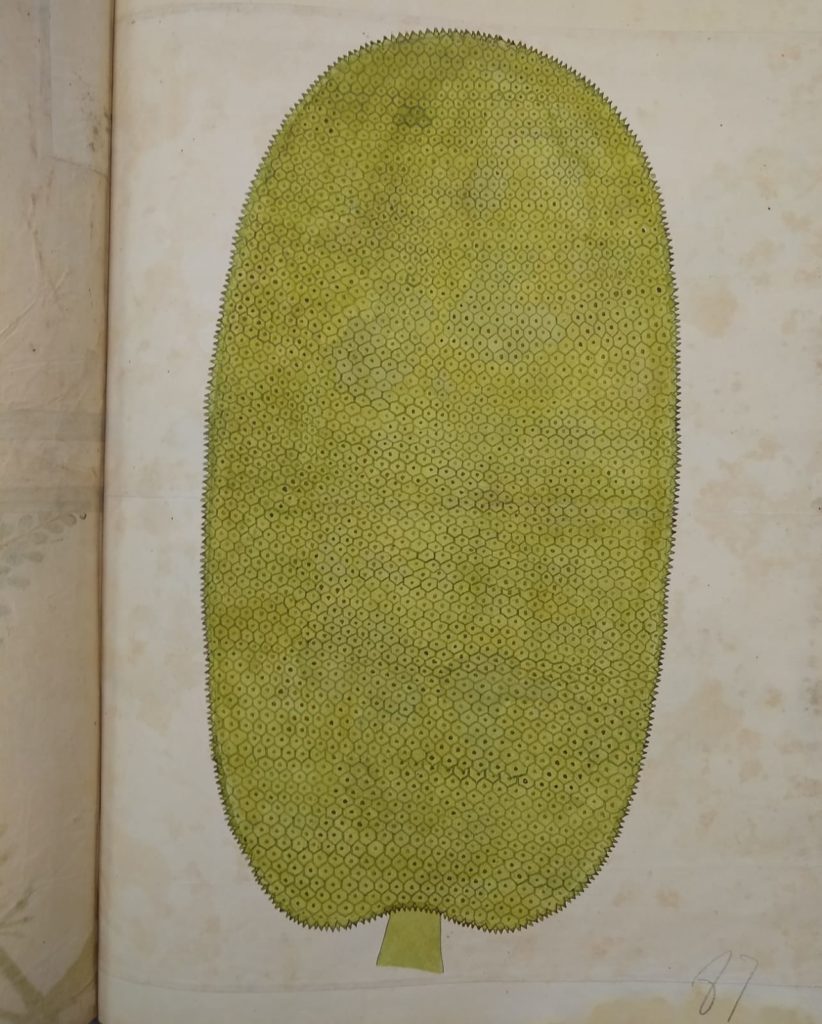
The folio volume, which clearly dates from the late eighteenth century, contains 106 drawings by a handful of Indian artists, some highly finished, others markedly stylised, such as one of the jak fruit. The most unusual feature of the album is that the drawings of the major part (some later insertions will be discussed later) are painted on ledger paper – the kind designed for financial account keeping, ruled with vertical red lines. On the flyleaf is a pair of notes that give at least its late nineteenth-century provenance and relate to two key players in the history of Indian museums, international exhibitions and economic botany. The volume was bought in an antiquarian bookshop on Ludgate Hill, London, by Sir George Birdwood (1834–1917), who in 1893 gave it to Sir George Watt (1851–1930), upon whose death it came to RBGE with Watt’s other botanical collections.
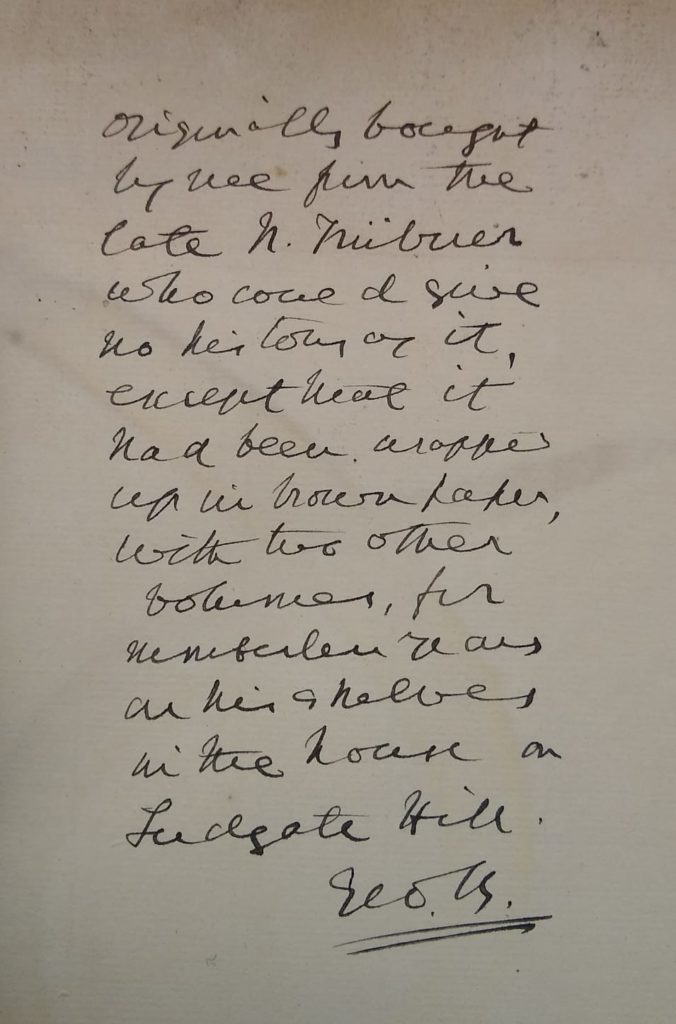
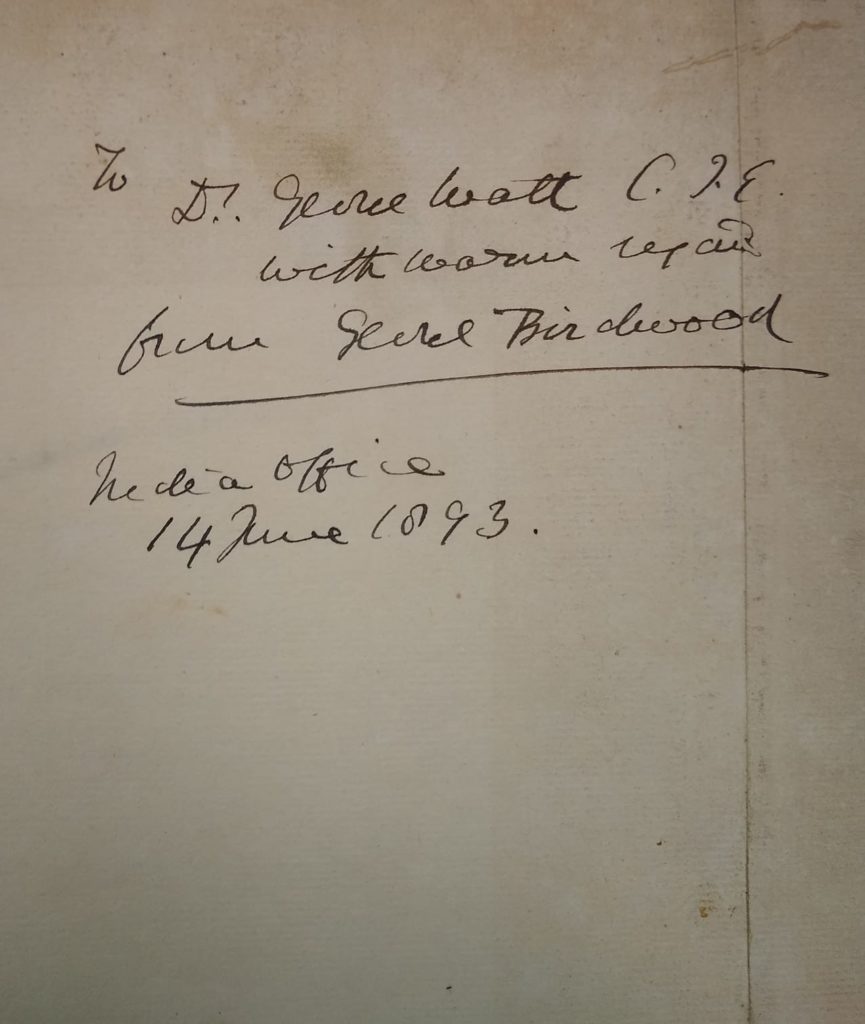
The earliest Indian drawing in the RBGE collection is one of the legume Codariocalyx motorius sent to John Hope in around 1775 by the East India Company surgeon James Kerr (1737–1782). The strange jerking movements of the lateral leaflets of the telegraph plant were of great interest to Hope and his contemporaries including Erasmus Darwin, as also to the latter’s grandson Charles. At the NHM are three volumes of drawings commissioned by Kerr that found their way into the library of Sir Joseph Banks. Their 559 drawings are by several different artists, one of whom is Bhawani Das who later worked in Calcutta for Sir Elijah and Lady Impey. While cataloguing this collection many years ago I was beyond thrilled to find in it versions (usually more highly finished) of many of the drawings in the RBGE album. One of them, a duplicate of Hope’s Codariocalyx, confirmed beyond doubt that the commissioner of the RBGE album was none other than James Kerr, though its route to Edinburgh clearly had nothing to do with Hope.
The next part of the story emerged when the librarian Gordon McDaniel found an anonymous manuscript entitled ‘Diarium Plantarum Bengaliae’ in the New York Botanical Garden. He tried in vain to establish its author and by time I had done so, and wrote to tell him that it was the lost text for some of the Banks/RBGE drawings, he was sadly no longer alive, having died in 2011. This is not really the place to go into the fascinating story of Kerr, his Jacobite father or his Indian wife Margaret Ina, but one of the many crucial pieces of evidence in clinching the identification of the ‘Diarium’ is that on its last page are written, touchingly, records of the birth of two children: ‘James born 19 Novemb. 1774’ and ‘Robt born 22d Decr 1776’, who prove to have been the couple’s.
The final piece of the jigsaw concerns two of the later insertions in the RBGE album: at the front is a manuscript index to the drawings contained, and at the back a pair of monochrome drawings of a feathery leaf and an umbelliferous inflorescence. The drawings bear Persian inscriptions, so were almost certainly made in India; they are of the asafoetida, Ferula persica, a plant used medicinally and for seasoning (‘hing’) and are copied from a pair of anonymous engravings that illustrate a paper published in 1785 by John Hope in the Philosophical Transactions of the Royal Society in London. I had given up all hope of ever discovering the early history of the Edinburgh album, or the compiler of its index, until these were revealed recently while cataloguing the Fleming Collection of botanical drawings at NHM.
John Fleming (1746–1829) was born in Edinburgh and attended Hope’s botany lectures in 1765 and 1766. In 1768 he became an Assistant Surgeon in Bengal and ended up as the head of the Bengal Medical Board until retiring in 1814. He knew all the great surgeon-naturalists of the period and had exquisite copies made for himself of the drawings commissioned by William Roxburgh, Francis Buchanan and William Hunter, in addition to commissioning his own from a variety of artists. Although Fleming died in 1829 it was not until 1882 that his collection was purchased by the then BM(NH) where, on arrival, its 13 volumes were disassembled, the drawings incorporated into a general illustrations collection. At some unrecorded point it was decided to remake the collection, which was clearly done in an unsatisfactory manner – some early, but unrelated, Indian drawings were mistakenly taken for Fleming ones, while 740 were not recognised as such and formed into a second collection with the unimaginative title ‘Indian Drawings Miscellaneous’. The recent work has shown the full extent of the Fleming Collection to be of around 1800 drawings, to be extremely heterogeneous, deeply fascinating and worthy of a book.
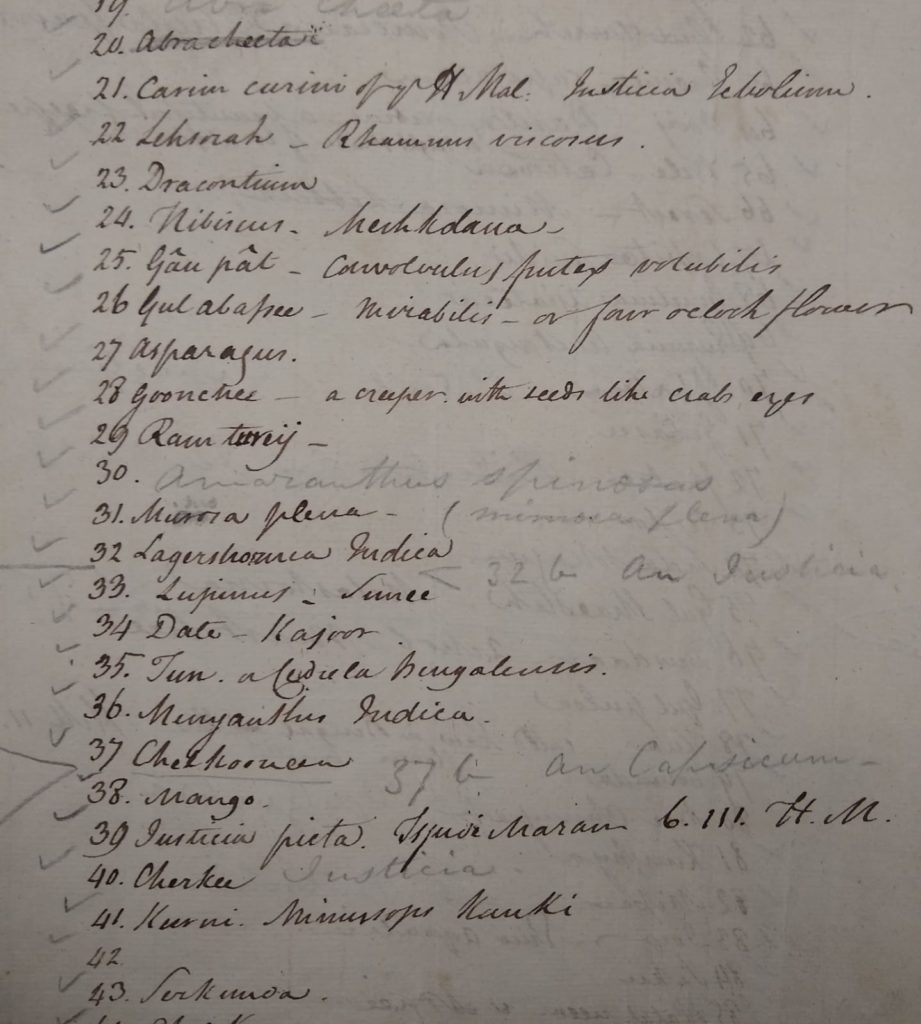
One of the most exciting discoveries was that Fleming’s handwriting on the labels of the drawings is identical with that of the index of the RBGE Kerr album, so that Fleming must have been an early owner. On Kerr’s premature death in Calcutta in 1782 his collections were auctioned and Fleming must have purchased the album either then or slightly later.
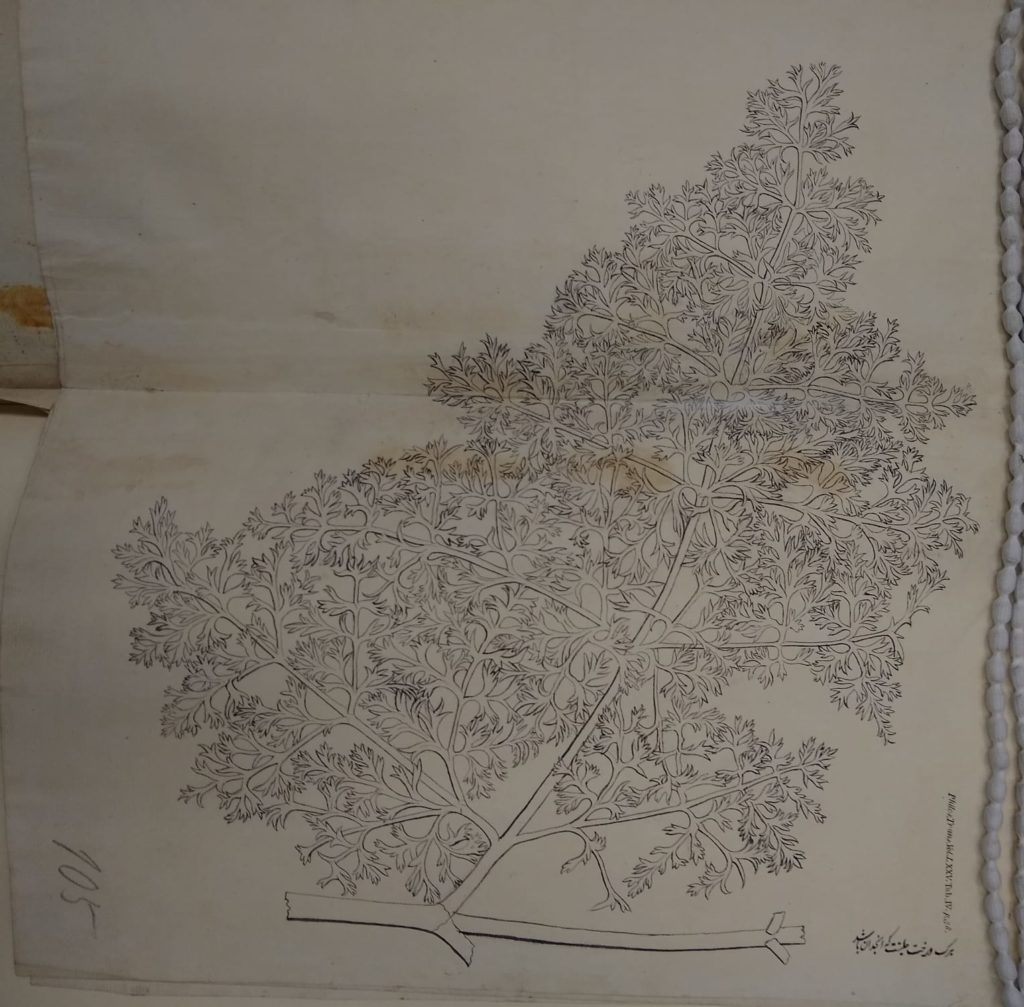
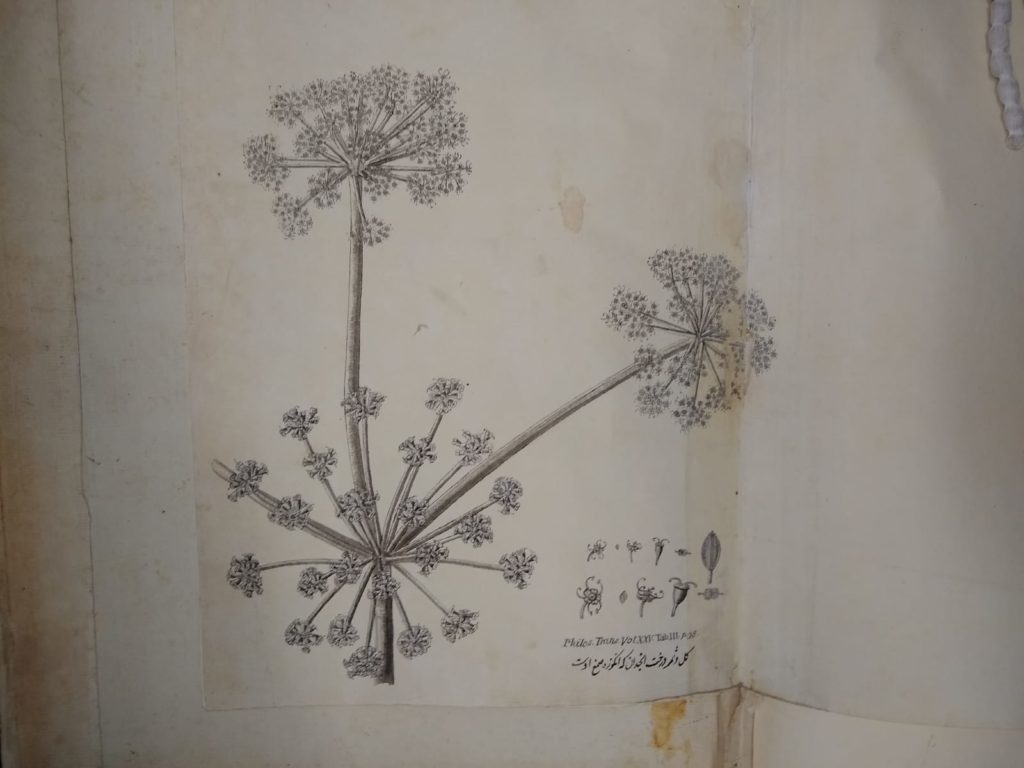
The two Hope copy plates are most likely to be part of Fleming’s additions to the album. It is not known how or when Fleming could have seen a copy of the Philosophical Transactions (perhaps during a home leave of 1802–5, though he did become a Fellow of the Royal Society in 1813), but he would undoubtedly have been interested in the asafoetida paper, not only for the medicinal properties of the plant, but as the work of his erstwhile botany professor. The drawings are noteworthy as an early example of an Indian artist being asked to copy Western botanical engravings: the Persian annotations were transliterated and translated for me by the late and lamented Bruce Wannell as barge-e derakht-e halitat, ke anjudan bashad, the leaf of the halitat bush, which is also called anjudan, and gol o samar-e derakht-e anjudan, ke anguza samghe-e u-st, the flower and fruit of the anjudan bush, whose gum is (known as) anguza.
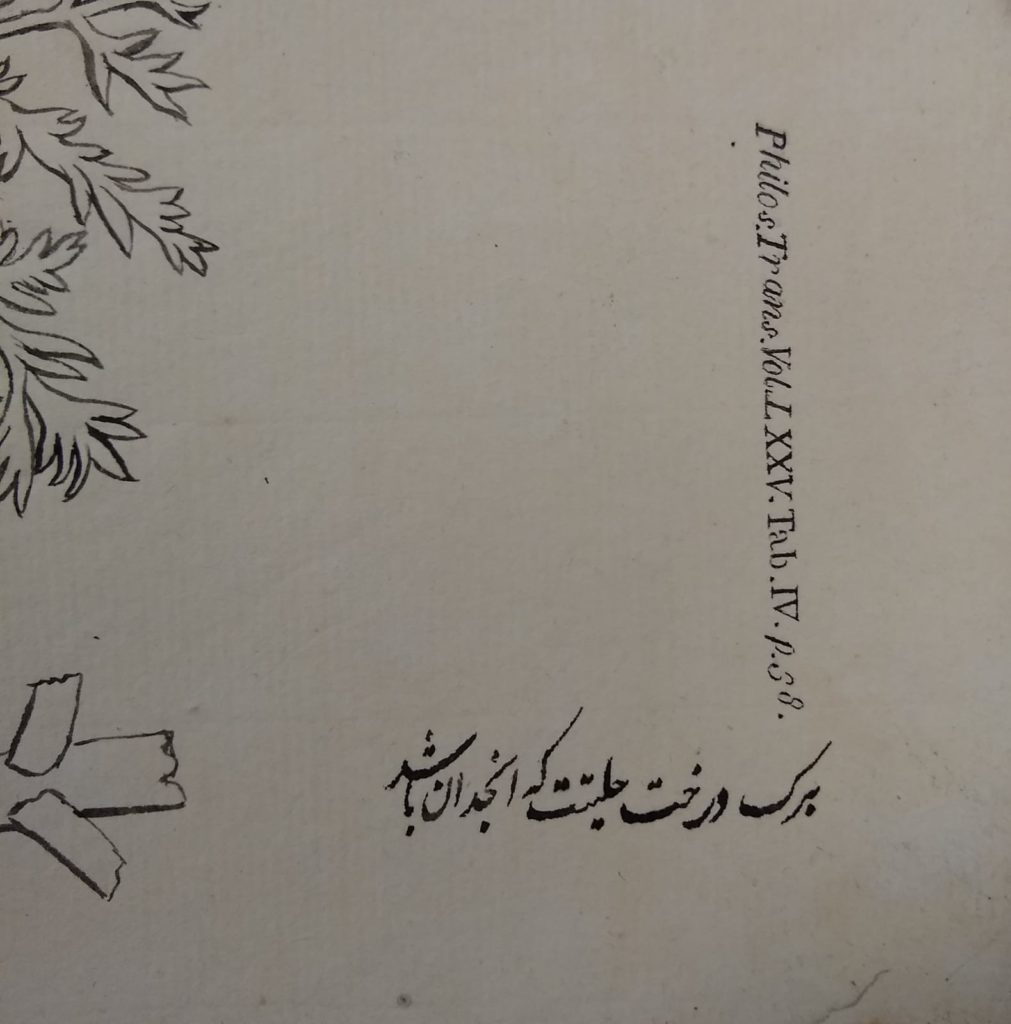
Yet another of the surprises as I made my way through the Fleming collection was to encounter three drawings of the jak fruit covered in annotations by James Kerr, and familiar from both the RBGE and Banks Kerr collections. These must erroneously have been assumed to be part of the Fleming collection when it was reconstituted, but in fact belong with an elaborate but unpublished paper on the jak fruit entitled ‘A Description of the Jacca or Jake Tree’ written by Kerr in Dacca in February 1774, the manuscript of which also ended up in the Banks collection. Here are two of its charmingly worded paragraphs:
Qualities. The graveolent smell of the fruit is disagreable to many Europeans, & so is the Taste from its fulsom sweetness. – During the time of foecundation the flowers send forth a peculiar & Delicious odor. – If any part of this plant is punctured or in the least wounded, a white milky Juice runs out in Drops & quickly coagulates into a very viscid substance, used in compositions for Bird-lime. –
Utilitas. The Branches form a regular dense Top crouded with evergreen leaves, affording a pleasant shade in this hot climate especially when the tree is in flower. One tree produces from Ten to thirty aples, one of which will give a Delicious & nourishing repast to six or Ten natives. It is supposed to be a great provocative, which its native richness seems to Indicate. – The young fruit & ripe seeds are used in their culinary preparations – The seeds toasted are similar & not inferior to chestnuts – The wood is hard and receives a fine Polish, when young it is yellow, when old it turns to a mahogony colour. It is used in Household furniture & for various other purposes. –
Jak is in the family Moraceae and monoecious, with minute male and female flowers aggregated into heads. In the drawing of the female one reproduced above Kerr’s anonymous artist has gone to quite extraordinary lengths to depict the individual florets. There are no fewer than 2397, each represented by a tiny hexagon, with a central dot representing its stigma.
